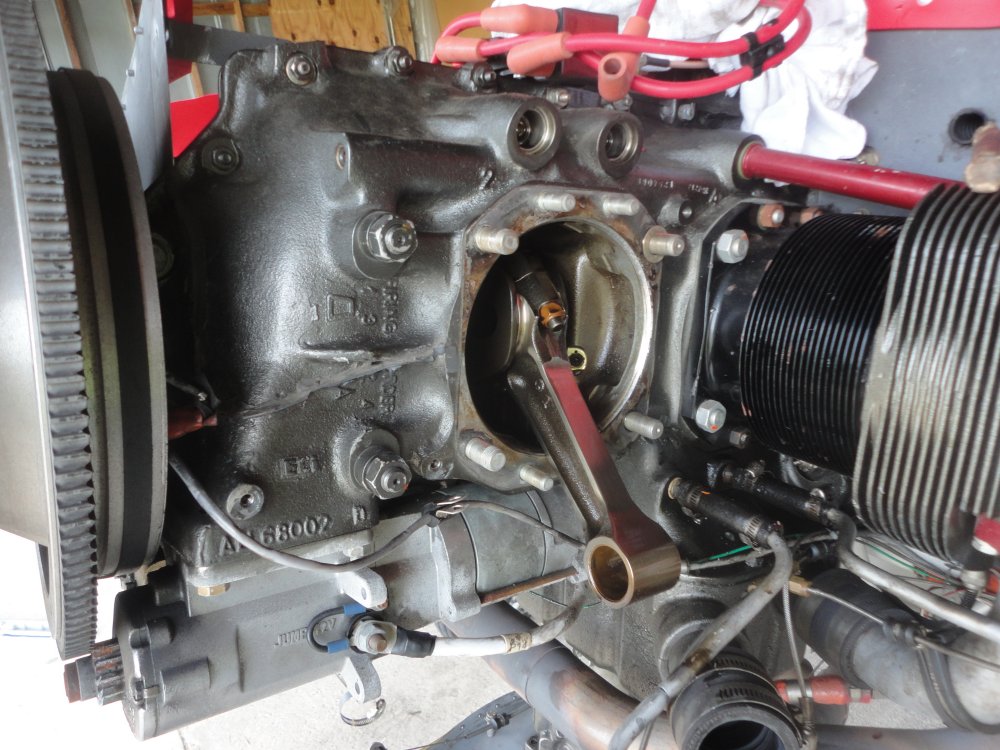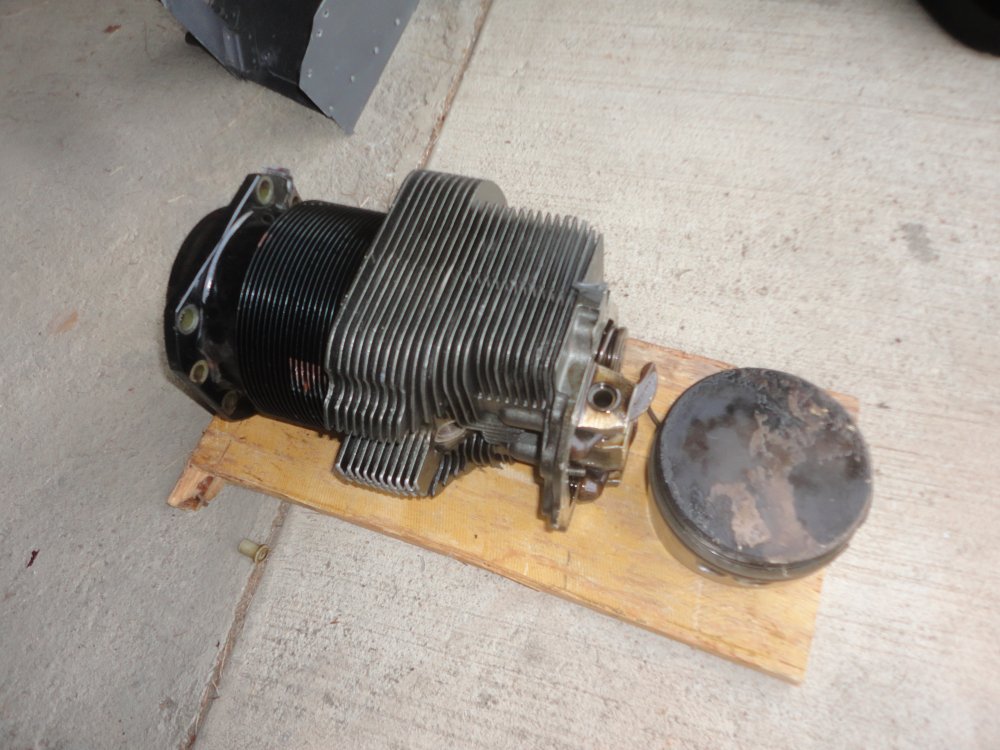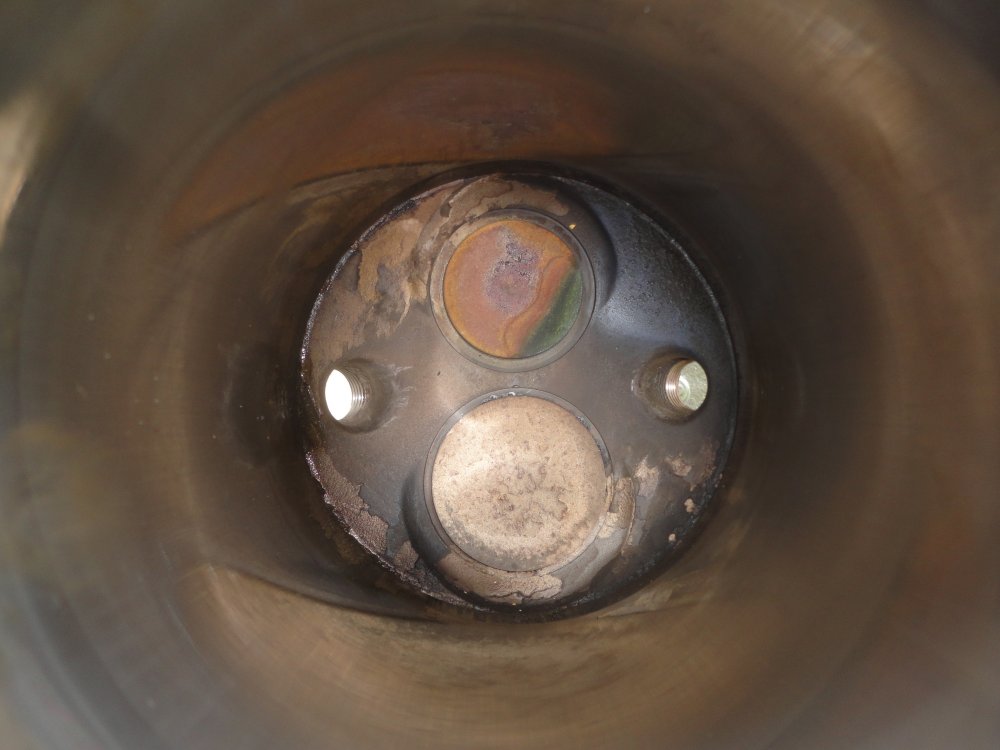May 3, 2014 - Annual Condition Inspection
The annual Condition Inspection started with the usual taking off of all the fairings, inspection plates, cowl, spinner, seats, etc. The wheels pants, gear fairings and intersection fairings were already off from the flat-tire fiasco at Millville. I jacked up the airplane and put a new tube and tire on the right side. The tailwheel will let you know if it isn't greased annually by making unpleasant noises so did that. I inspected all the aircraft controls and hinges, then lubricated them. Everything looked good.
Over the last few year my hangar neighbor Tom and I have been doing our annuals at the same time, so we do our compression tests together. That works well since it's a two person job. The compression on his Maule was outstanding. The compression on my RV-7 was almost perfect for three cylinders. But on my #2 cylinder, front left, I had zero compression! We could hear air hissing out the exhaust pipes. This ... was ... not ... good.
Well, what to do? The general concensus was that the exhaust valve was burned, but I didn't want to pull the cylinder without knowing for sure. The following week we used a borrowed a Snap-On borescope tool and looked into the cylinder at the piston top and the exhaust valves. It was immediately obvious that the exhaust valve in the #2 cylinder was in fact burned. Tom looked at all his cylinders and they were all good. By the way, I really like the idea of looking at the piston and valves with the borescope tool. I'm going to start doing it at each annual.
The following week an A&P/IA came out and pulled the cylinder.


This, my friends, is what a burned exhaust valve looks like. The orange-ish area is good. You want to see the entire exhaust valve that color. The green crescent on the side is bad. That's the burned area. As a result, the cylinder is not developing full power. More importantly, the exhaust valve would fail eventually. So it must be replaced. I'm glad we caught it early. This is why you do the annual inspection.
There is a Cylihder Repair facility not to far away in Hagerstown, Maryland, so I took the cylinder and piston there myself. The technician took the exhaust valve out on the spot and explained what he would do. It was interesting. A week later I drove back to Hagerstown and picked up the cylinder and piston. He had replaced the exhaust valve, piston rings, and honed the cylinder walls. I was impressed. Both cylinder and piston looked new.
The A&P/IA came out again and installed the cylinder/piston back on the engine. So, it all worked out. I missed a month of flying, but I did increase my knowledge of cylinders, pistons and exhaust valves by a couple of hundred percent. Plus the wallet is a little lighter. Gotta pay to play.
